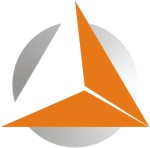

|
|
EDASEnvironmental Data Acquisition SystemThe concept behind EDAS is to provide Environmental Data collection systems using distributed computer processing and saving the results in a standard database format thus making use of modern computer networking technology.. Single PC systems tend to be legacy designs that have evolved around existing equipment, probably having been added to at various times in their history and almost certainly the result of ad hoc software updates and changes. The basic concept of a single PC acting as a central data collection and display point has proved to be a very cost effective solution to the problem of collecting and recording environmental data Standard Sensor InterfaceThe standard EDAS system represents a compact method for the collection of live environmental data for operational use in ports and harbours. The system integrates the data from a serial Tide Gauge device with a solid state weather station to provide a complete harbour Metrological station in a single PC unit. Data from the system can be output by a variety of means to the EDS software ...
Legacy Sensor connectionA customised EDAS interface box provides a means for the connection and digitization of a range of digital and non-digital environmental transducers. The interface uses a low power voltage source (12v) and converts data from the transducers to a one second burst of serial RS232 format data for input to the EDS software.
EDAS Software ConceptThe EDAS software package is several multi-tasking programs designed for use with Windows95 or Windows NT4/2000/XP operating systems. The software provides the data capture and display functions for use with the EDAS hardware and environmental transducers. The system consists of three main program elements ...
EDS - Data Collection ServerThe EDS program allows the user to connect to various sources of environmental data, filter the incoming values and save in an ODBC compliant database such as MS Access or SQLserver. The program also acts as a server transmitting processed data as small UDP packages at 1 minute intervals across a TCP/IP network. The user can configure the display content, size, colour and scaling of various display types using splitter bars and configuration icons. Each configuration can be saved and used as a default for booting the software when run from a power up or reset. Data is exported into ODBC compliant databases for subsequent retrieval using standard database software.
Main Features
VTS - Multiple sensor displayThe VTS software is passive client designed to sit on a network and listen for messages transmitted by various versions of the EDS software package. Typical applications of this software would be to display Tide data from several locations at once in a Port/Harbour control office also known as VTS.
Typical VTS display of multiple gauges in S.WalesEDSclient - Multiple location displayThe EDSclient software is passive client designed to sit on a network and listen for messages transmitted by various versions of the EDS software package. Typical applications of this software would be to display a copy of the data being captured by the EDS software for a particular location. Typical EDSclient showing multiple locationsTechnical Reference site - Port of Southampton(UK)
|
Copyrightę2011 Lymtech LLC - Last modified: 02-07-2011
|